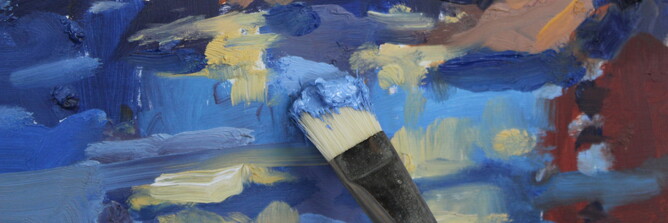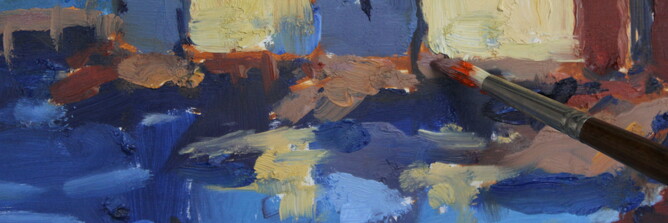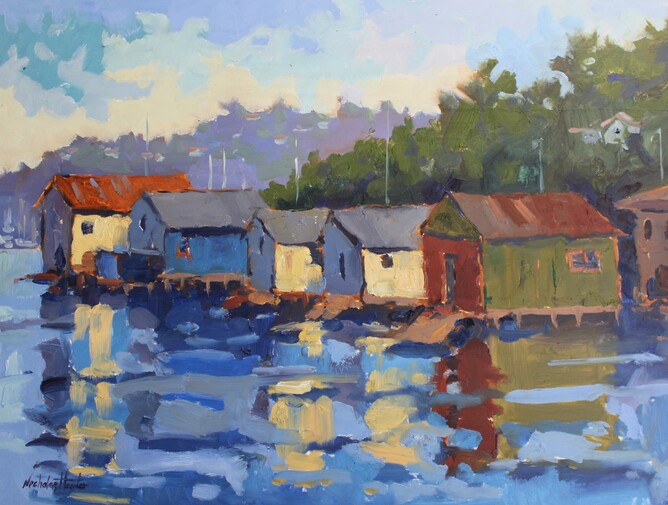As any artist will tell you, the right brush can make all the difference. Over the years, I've experimented with dozens of different shapes and styles, but time and again, I find myself reaching for the same five. Each one has its own strengths and character, and knowing when to use which can bring a painting to life.
A favourite oil painting brush is personal choice and depending on what subjects, style and size of masterpiece you decide to paint, you will have your own likes and preferences. Some go-to brushes I use are so worn that there is not much left of them and that perfect replacement is difficult at times to find.
Here are my top 5 favorite paint brushes and how I use them in my artwork:
1. Filbert Brush – The Versatile Workhorse
If I could only choose one brush to use, it would probably be the filbert. With its flat bristle and naturaly rounded tip, it offers the perfect balance between a flat and a round brush. I love it for blending edges, softening lines, and creating organic shapes like those found in landscapes. Used on it's side it's an excellent mark making tool and almost has a bouncy feel on the canvas. It’s smooth, subtle, and super flexible — a real MVP in my studio.
2. Flat Brush – The Bold Mover
Flat brushes have a long, rectangular shape that makes them ideal for bold strokes, sharp edges, and covering large areas quickly. I reach for a flat when I’m blocking in backgrounds, painting skies, or laying down wide, expressive strokes. It’s also fantastic for creating clean geometric shapes and working in a more graphic or structured style. When uses on its edge can be used for nice sharp lines.
3. Bright Brush – The Controlled Performer
Similar in shape to the flat but with shorter bristles, the bright brush is my go-to when I want more control. I use it for strong, deliberate marks and tight spaces where a flat would feel too floppy. It’s great for working with thick paint and shorter strokes — especially when you need that extra precision without sacrificing the ability to make bold moves. A great "scooper upper" of paint for impasto passages in custom painted seascapes.
4. Round Brush – The Detail Lover
Round brushes are probably what most people think of when they picture a paintbrush — and for good reason. Their pointed tip and rounded body make them incredibly versatile. I underestimated this brush for a long time and have just recently become re-aquainted with it. I love using rounds for detailed work, line work, and even interesting marks in the final passages in a fine art piece. Whether I’m painting landscapes, seascapes or even still lifes with delicate lines, a round brush gives me the control and flow I need.
5. Rigger Brush – The Line Master
The rigger brush, with its long, fine bristles, is perfect for painting long, flowing lines. I use the rigger and 0 round (as pictured) interchangeably, it’s a must-have for fine line work, especially for your signature. I love the elegance and freedom this brush gives me — it’s like drawing with a paintbrush.
Final Thoughts
Each of these brushes has earned a permanent spot in my preserving jar (where I keep my paint brushes...I had to eat the peaches first!), because of the unique way they interact with paint, canvas, and my own style. Choosing the right brush isn’t just about technique — it’s about feeling. The more you paint, the more you’ll learn which brushes will be your favourites as well.
At the end of a days painting in the studio or out plein-air painting, I try to give my brushes a clean, ready for another painting adventure, but sometimes, I'm not as diligent at this as I should be. When left uncleaned for a number of days, my brushes would be better suited as drum sticks or maybe stakes for my beans in the vege garden? So keep your brushes in good condition and they should last a long time and create many beautiful works of art for you.








